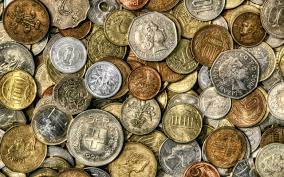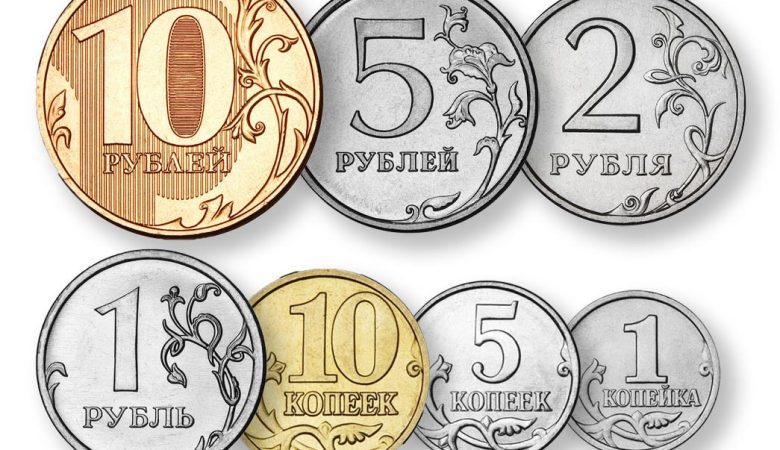What are Russian coins called?
In Russian, coins are referred to as “рyбль” (rubl’). The official currency of Russia is the ruble, which can be written as “₽” or “руб” to indicate different quantities. There are 100 kopecks in one ruble, and these denominations may also be seen on Russian coins and banknotes. Russian coins are available in 1 ruble and greater denominations, as well as 5 kopecks, 10 kopecks, 50 kopecks, and 1 kopeck. Russian coinage may undergo design and visual changes throughout time to represent the nation’s currency’s evolution as well as historical and cultural themes.
What are the current coins in Russia?
There are several different denominations of coins in use in Russia right now. It is conceivable that new coins have been issued since then, or that old ones have undergone modifications, as coin designs and denominations are subject to change throughout time. A list of some of the most widely used Russian coins may be seen below, although for the most recent details, it’s best to verify with an authoritative source:
- 1 kopeck (копейка)
- 5 kopecks (копеек)
- 10 kopecks (копеек)
- 50 kopecks (копеек)
- 1 ruble (рубль)
- 2 rubles (рубля)
- 5 rubles (рублей)
- 10 rubles (рублей)
Please be aware that these are the denominations that are often used in Russia for regular transactions. These coins’ designs frequently include significant historical or cultural symbols, places, or people. Since coin designs do vary from time to time, you might wish to check with an authoritative source or a current financial news site to confirm the most recent coin designs and denominations.

Russian coins Speciality:
Like coins from many other nations, Russian coins frequently have distinctive qualities and peculiarities. The following characteristics of Russian coins set them apart:
- Historical Themes: Russian coins usually include historical motifs on them, such as pictures of notable people, significant occasions, and historical sites. The rich cultural legacy of the nation is frequently promoted and preserved through these designs.
- Cultural Significance: Certain Russian coins honor the nation’s cultural variety by presenting native peoples, ethnic customs, and creative interpretations from around the nation.
- Commemorative Coins: When major events or anniversaries occur, like the Olympics, World Cup, and other cultural landmarks, Russia releases commemorative coins. Most of the time, these coins are quite collectible.
- Bullion Coins: Silver and gold bullion coins are manufactured in Russia using precious metals. These coins, which may have distinctive patterns like the Russian coat of arms, are usually released as investments.
- Precious Metal Content: Russian coins are desirable for their inherent value in addition to their face value since they frequently include precious metals like gold, silver, and platinum.
- Unique Shape and Materials: Certain Russian coins—like the bimetallic 10-ruble coin, which has an eye-catching two-tone appearance—may have unusual forms or compositions.
- Limited Editions: Numismatists and coin collectors frequently seek out limited-edition coins that Russia issues in tiny quantities.
- Security Features: To prevent counterfeiting, security elements may be included in contemporary Russian coins.
- Historical Coinage: Russia has a rich history of coinage, with a wide range of coin styles and denominations going back many centuries. Also, collectors are frequently looking for old Russian coins.
It’s crucial to remember that Russian coin designs are subject to change, and subsequent issues could have distinct themes and features. Russian coins are popular among collectors in Russia and abroad because of their artistic and historical significance.

Elements:
Russian coins usually include a variety of design and compositional characteristics. These components differ according to the coin’s denomination, use, and time of issuance. The following components are frequently seen on Russian coins:
- Obverse (Front Side): Russian coins usually show the current monarch or, on earlier coins, a well-known historical figure on the obverse. The Russian coat of arms and other official emblems are frequently seen on more contemporary coins.
- Reverse (Back Side): Russian coins usually include a variety of motifs on the reverse side, such as pictures of famous places, occasions, cultural icons, animals and plants, or other subjects. This side frequently offers a distinctive and creative portrayal of Russian history and culture.
- Edge: Depending on the coin’s value and intended use, its edge might be plain or include an inscription or design.
- Year of Issue: The year of issuance is often marked on Russian coins, enabling users and collectors to determine the coin’s minting date.
- Metal Composition: Depending on the coin’s worth and intended use, the metal composition—copper, nickel, silver, gold, or other materials—is specified on the coin.
- Diameter and Weight: Usually, the diameter and weight of the coin are mentioned to aid in identification and coin valuation for consumers and collectors.
- Security Features: Contemporary Russian coins could include holographic components or unique finishes as security measures against counterfeiting.
- Artistic Elements: Collectors find Russian coins visually appealing due to their numerous creative designs and meticulous attention to detail.


Remember that the particular components of Russian coins might differ from one to the next based on the coin’s value, series, and intended use, among other things. Due to their historical and cultural significance, Russian coins are highly sought after by coin collectors who also value their distinctive and beautiful qualities.




